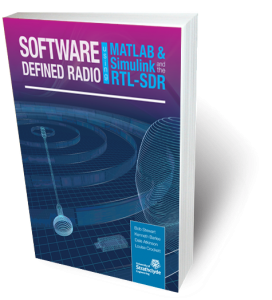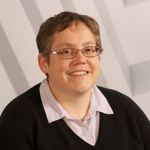Software Defined Radio using MATLAB & Simulink and the RTL-SDR
In the last 20 years, SDR (software defined radio) has become a core DSP (digital signal processing) and digital communications technology for many mobile and wireless communications systems. You can find more information on a few different desktop SDR solutions here.
The availability of the RTL-SDR for less than $20 brings SDR to the home and work desktops of EE students, professional engineers and the maker community. The RTL-SDR device can be used to acquire and sample RF (radio frequency) signals transmitted in the frequency range 25MHz to 1.75GHz, and using some official software add-ons, these samples can be brought into the MATLAB and Simulink environment for users to develop receivers using first principles DSP algorithms. Signals that the RTL-SDR hardware can receive include: FM radio, UHF band signals, ISM signals, GSM, 3G and LTE mobile radio, GPS and satellite signals, and any that the reader can (legally) transmit of course!
In this free book we introduce readers to SDR methods by viewing and analysing downconverted RF signals in the time and frequency domains, and then provide extensive DSP enabled SDR design exercises which the reader can learn from. The hands-on examples begin with simple AM and FM receivers, and move on to the more challenging aspects of PHY layer DSP, where receive filter chains, real-time channelisers, and advanced concepts such as carrier synchronisers, digital PLL designs and QPSK timing and phase synchronisers are implemented. Towards the end of the book, we demonstrate how the RTL-SDR can be used with SDR transmitters to develop a more complete communications system, capable of transmitting text strings and images across the desktop.

Available in both hardback and softback, as well as a free PDF download
Softback ISBN : 978-0-9929787-1-6 Hardback ISBN : 978-0-9929787-2-3
About the Authors
Software Defined Radio using MATLAB & Simulink and the RLT-SDR was written by Bob, Kenny, Dale and Louise of the University of Strathclyde SDR Research Lab. You can check out their LinkedIn profiles at the links below. Click here to find out information about the StrathSDR team:






